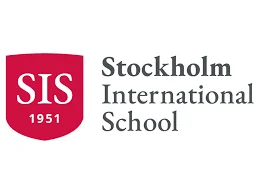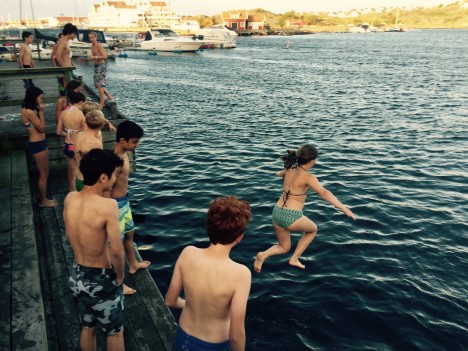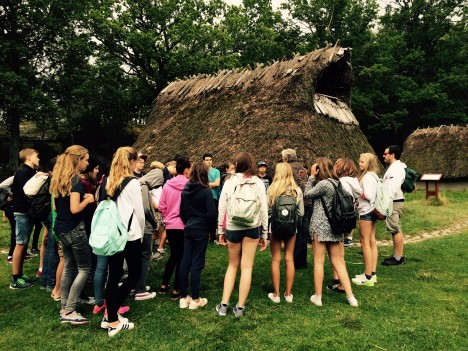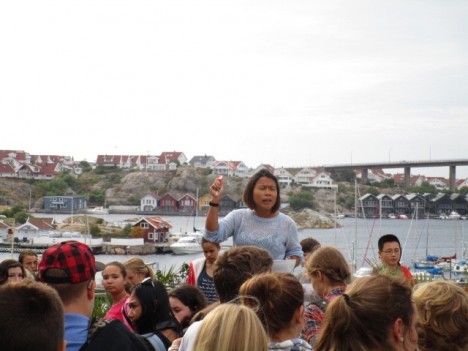School trips help expat students feel at home
Building relationships in a brand new country can be tough – and expat children who switch schools frequently can have a hard time settling in. But Stockholm International School has a recipe for success that makes every student feel at home.

Walking through Stockholm’s idyllic St. Johannes church yard at 1pm on a Monday, one hears church bells blending seamlessly into chiming laughter.
There’s a playground nestled into one corner of the park, and dozens of children are cheering on their peers in a fervent but friendly game of kickball. Everyone is involved – there are kids playing rock-paper-scissors on the side, but no one is alone.
It could be an ordinary day at an ordinary school. But there’s something remarkable about the atmosphere here, an air of warmth and inclusiveness, despite the variety of languages flowing from their lips.
Indeed, the student body at Stockholm International School represents 64 nationalities – and all of them are friends.
“There are always a lot of new kids here,” says Matthew Schulte, a grade 6 advisor and science teacher from Australia.
“So many families come and go through Stockholm, and some of the students only arrive in Sweden a week before school starts.”
But rather than struggling to get to know each other, it’s clear that these kids are already totally comfortable in one another’s company.
It’s no coincidence. Stockholm International School has a tried-and-true formula for helping students and teachers alike feel at home, whether they attend the school for one year or ten.
“The first week is orientation week, where we have a significant advisory programme and use a buddy system,” Schulte says. “We pair up the new kids with a group of kids with the same language skills, so they’re able to communicate at least in some way.”
And then it’s time for the real kickstarter, perhaps the highlight of the year: the school trips.
All students in grades 6 to 10 go on an annual 'Sweden trip', a journey which is part of the SIS curriculum and teaches students about the nature, geography, history, and culture of Sweden - but above all, giving them a chance to get to know each other.
“We do it at the start of each year, and it’s a great way to build relationships by immersion,” Schulte says.
“For many of the sixth graders it’s their first time away from home. The students get the chance straight away to develop friendships, get to know their teachers, and build good student-teacher relationships before the school year even really starts.”
In grade 6, students visit Öland, and in the years following they visit Gotland, Smögen, and Lassekrog, ending with a trip to Åland in 10th grade.
"We started the trips to enable our students to get in contact with Swedish culture, history, and geography," says Barbro Ahl, Dean of Students. "That's why we go to different places in different grades as well, so they can see several parts of Sweden."
For sixth graders Misa and Saruul, the trip was an opportunity to explore with old friends while making new ones.
“It’s very exciting,” Saruul exclaims. Her brother also attends the school and she says she has been waiting to go on such trips “for a long time”.
“Because like, when you’re a sixth grader, you don’t really know what you want to do because you haven’t done it before. And then you get to go somewhere new.”
Misa, who has attended schools in both the US and New Zealand before moving to Sweden, agrees.
“We didn’t have trips at my other schools,” she says. “So it’s really fun that I get to do them now. I get to know my classmates better now. You are able to work better with your new friends since you got to know them.”
Students stay in cabins on the trips, and are generally assigned a room with an old friend or two as well as students they don’t know – yet.
“They try to put us with some new kids and some old too,” Saruul explains.
“It’s fun and very satisfying. I was placed with an old friend and two new friends, two people I was imagining I would become friends with. And I did, it was very nice!”
And while the girls have a lot to say about the educational benefits of the trip – including a petting zoo, campfire nights learning about constellations, strolls through the forest and a visit to Kalmar Castle – they agree that the best part of all is getting to know their classmates.
“We mostly make friends on the bus and in the cabins,” Misa says. “The bus rides and all the activities we have together are the best.”
Nicolas, a tenth grader who just returned from his fifth ‘Sweden trip’, says the programme has been a transformative part of his education.
“Since we go on trips at the beginning of each year right after summer break, it really helps you refocus on the school year,” he explains. “It’s like a chance to wriggle into a new mentality and prepare for school – yet in a fun, social way.”
Of course, staying up late in cabins with your friends can lead to some rough morning museum visits, Nicolas admits – but the relationships built on the programme are well worth the temporary sleep shortage.
“You get to meet a lot of new people, and you get closer to your teachers as well,” he says. “You get to talk to them in an informal way and get to know them.”
Science teacher Schulte says the trips are his favourite part of the job, giving him an opportunity to teach kids in a unique learning environment.
“It’s a great way to start the programme, with something so significant for the kids,” he says, keeping a watchful eye on the playground as he goes through scribbled notes he’s been given by doting students. “Providing new experiences for the kids, it’s great.”
His own favourite experience from this year’s trip was the teachers’ spontaneous decision to treat the kids to a walk through the forest followed by building a massive fire on the beach and roasting marshmallows.
“We threw that together because we felt the kids needed something different, something authentic – and it was a highlight for many of the kids as well,” he says.
And the results of the four-day trips have far-reaching effects, echoing throughout the school year and setting the tone for future experiences.
“The main thing is to start the year by developing good, strong teacher and student social relationships, straight away,” he says. “With all kids, if you have good, clear expectations, there are no behavioral issues. It’s effective learning.”
This article was produced by The Local in partnership with Stockholm International School. All pictures from Stockholm International School.
This content was paid for by an advertiser and produced by The Local's Creative Studio.



.jpg)

Join the conversation in our comments section below. Share your own views and experience and if you have a question or suggestion for our journalists then email us at [email protected].
Please keep comments civil, constructive and on topic – and make sure to read our terms of use before getting involved.
Please log in here to leave a comment.